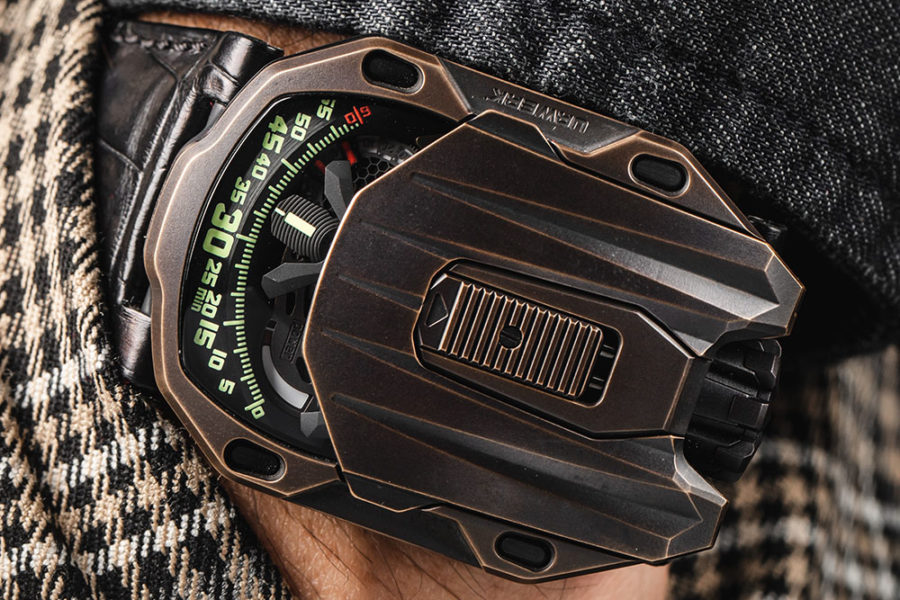There are only two elements that cannot be comprehensively measured by humankind: space and time. In all likelihood the origins of time, and of the universe itself –just like the end of time and the end of the universe, if there is one– will be forever a mystery to us. We will never fully comprehend these concepts, which is why it continues to fascinate us. -Jaquet Droz
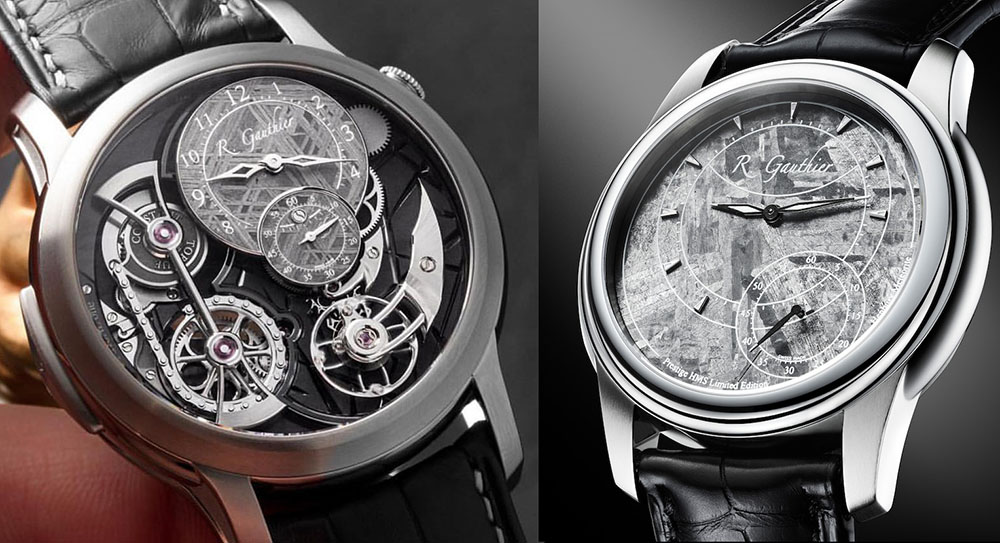
Romain Gauthier Prestige HMS & Logical One with Meteorite Dials
Romain Gauthier Prestige HMS – 10 Piece Limited Edition with Meteorite Dial
The newest Romain Gauthier Prestige HMS Stainless Steel (above right) is now available in a 10-piece limited edition with dials crafted from an ultra-rare Henbury meteorite. The meteorite used to make the dial is an octahedrite —an iron meteorite— that was discovered in 1931 at the Henbury crater field in the Northern Territory of Australia, one of the country’s best-known meteorite impact sites.
This meteorite looks like a fairly ordinary chunk of grey metal (below left) until it is subjected to a nitric acid treatment that reveals intersecting bands of nickel-iron crystal, known as Widmanstätten patterns or Thomson structures (below right). These structures formed during a long period of cooling within the parent asteroid.
To make the dial, a combination of three-axe machining center and electrical discharge machining is used to create a disc of the meteorite that is 33 mm in diameter and 0.8 mm thick. Retail pricing is approximately $68,000 USD.
Also shown above left is the Romain Gauthier Logical One with Meteorite dial.
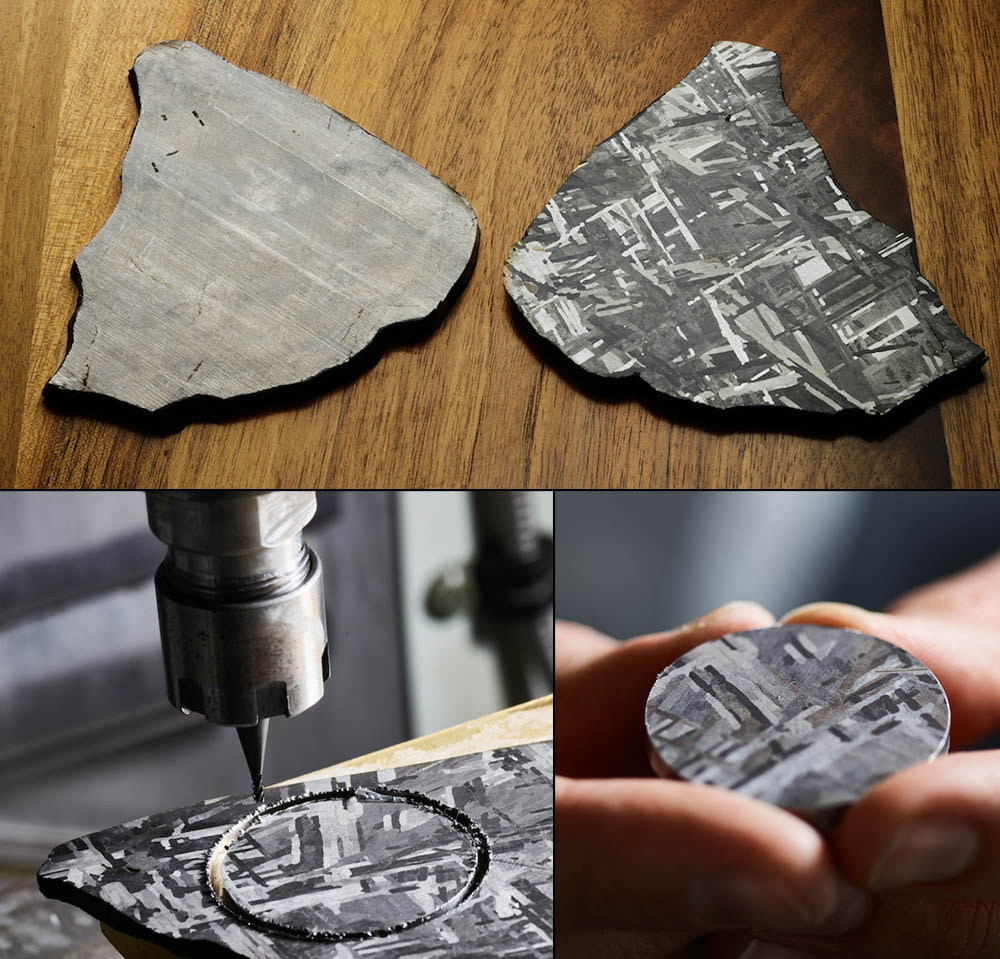
Romain Gauthier meteorite dial production
Omega Speedmaster Grey Side of the Moon “Meteorite” Watch
The original OMEGA Grey Side of the Moon is revered for its outstanding design and innovative thinking. Today, this new model delivers beauty in ceramic and 18K Sedna™ gold, as well as a real piece of space that you can wear on your wrist.
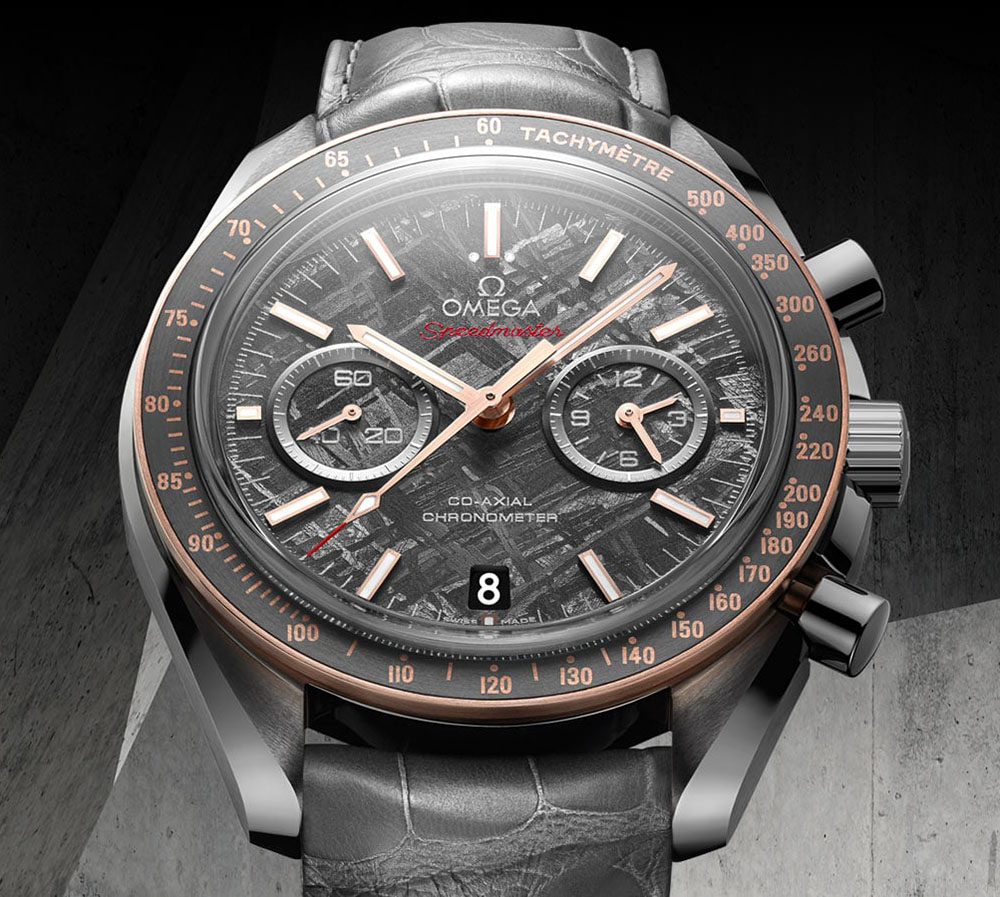
Omega Speedmaster Grey Side of the Moon Meteorite Watch
The Jaeger-LeCoultre Master Calendar With Meteorite Dial
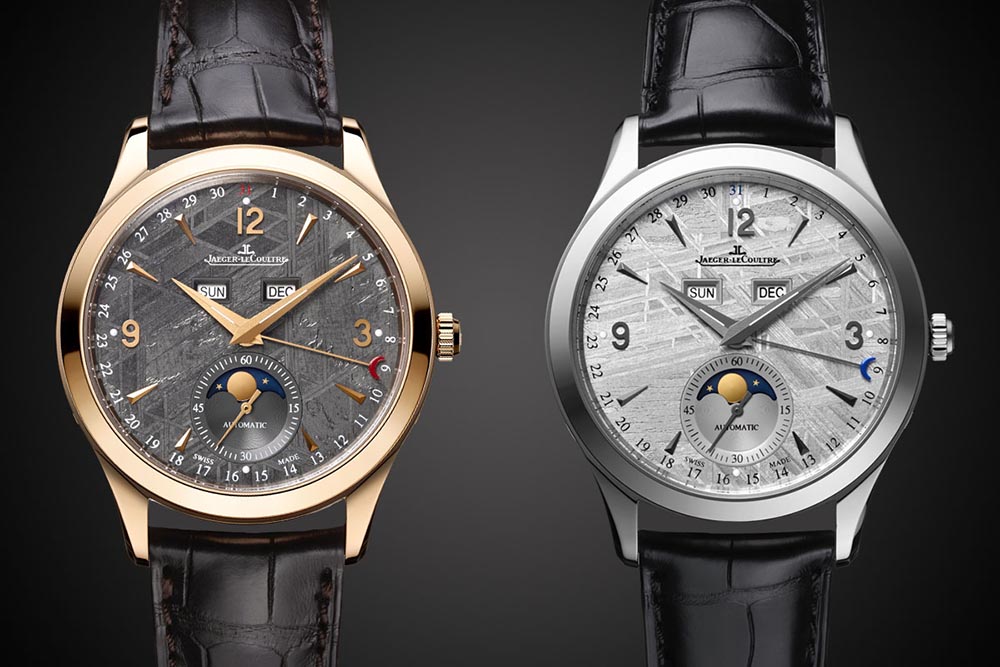
The Jaeger-LeCoultre Master Calendar With Meteorite Dial
De Bethune DB28 Kind Of Blue Tourbillon Meteorite
“When you first look at this watch, you’ll notice something unusual. The case is blue. Like, bright blue, and it’s not due to some strange PVD coating. De Bethune actually flame-blues titanium for its watches in a process similar to how most watchmakers blue screws. Here though it’s been executed on basically every visible piece of metal. The result is a watch with a lot of visual impact that still feels comfortable on the wrist, especially at 42.6mm across and just 9.7mm thick.
Sitting at the center of all of this though is a sliver of an actual meteorite. This one is taken from a meteorite that landed in Santiago del Estero, Argentina, about 5,000 years ago. In addition to being flat out cool, it adds some color to the watch with pink and purple hues that resemble the sunset or a nebula in outer space. That’s furthered by the fact that small white gold stars have been added. It’s so impressive that you could easily miss the very elegant tourbillon down at six o’clock.” -via Hodinkee
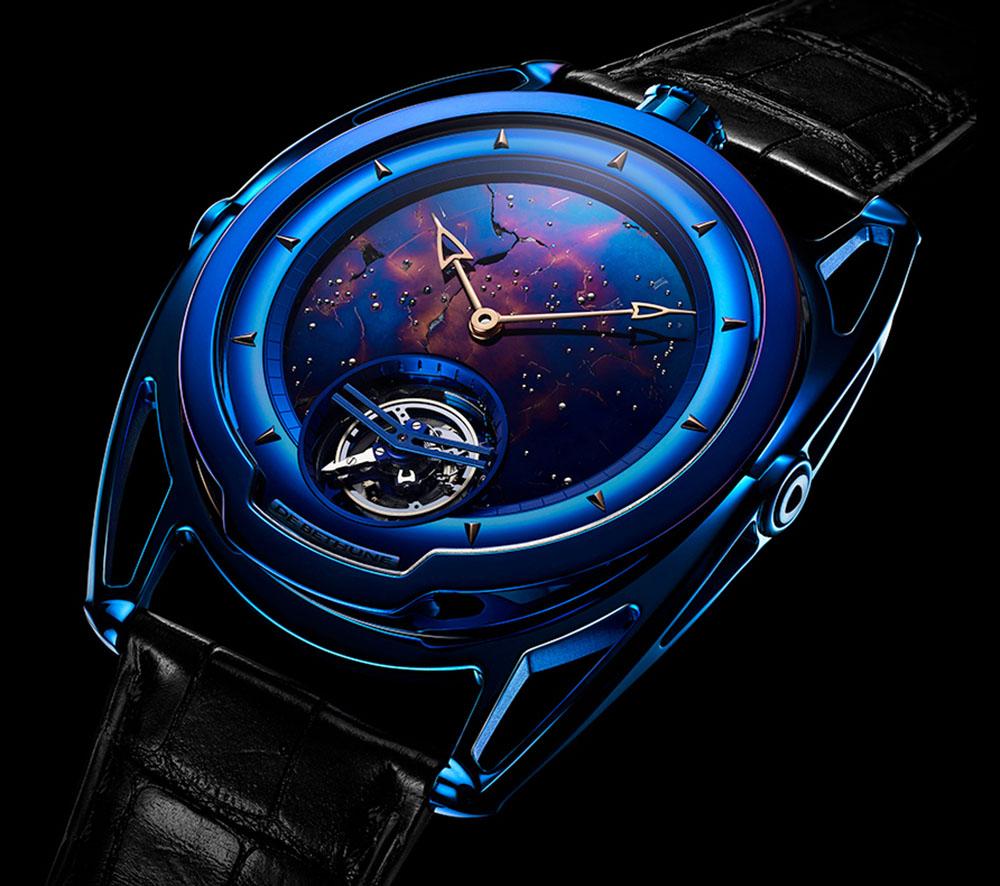
De Bethune DB28 Kind Of Blue Tourbillon Meteorite
De Bethune Dream Watch 5 Meteorite
Made of a 4000-year old meteorite, the De Bethune Dream Watch 5 (below) is a bold approach to watchmaking that is simultaneously exceptional and mystifying. A true wrist sculpture, the Dream Watch 5 is a continuation of De Bethune’s research into shapes, materials, and colors. The mechanics fade into the background so as to ensure an even more beautiful expression of design. The display of the hour, minute and moon phase functions almost vanishes. As the creations progress, the design is progressively refined in favor of a curved deltoid motif, a major element in the aesthetic of the collection and more generally of De Bethune watches.
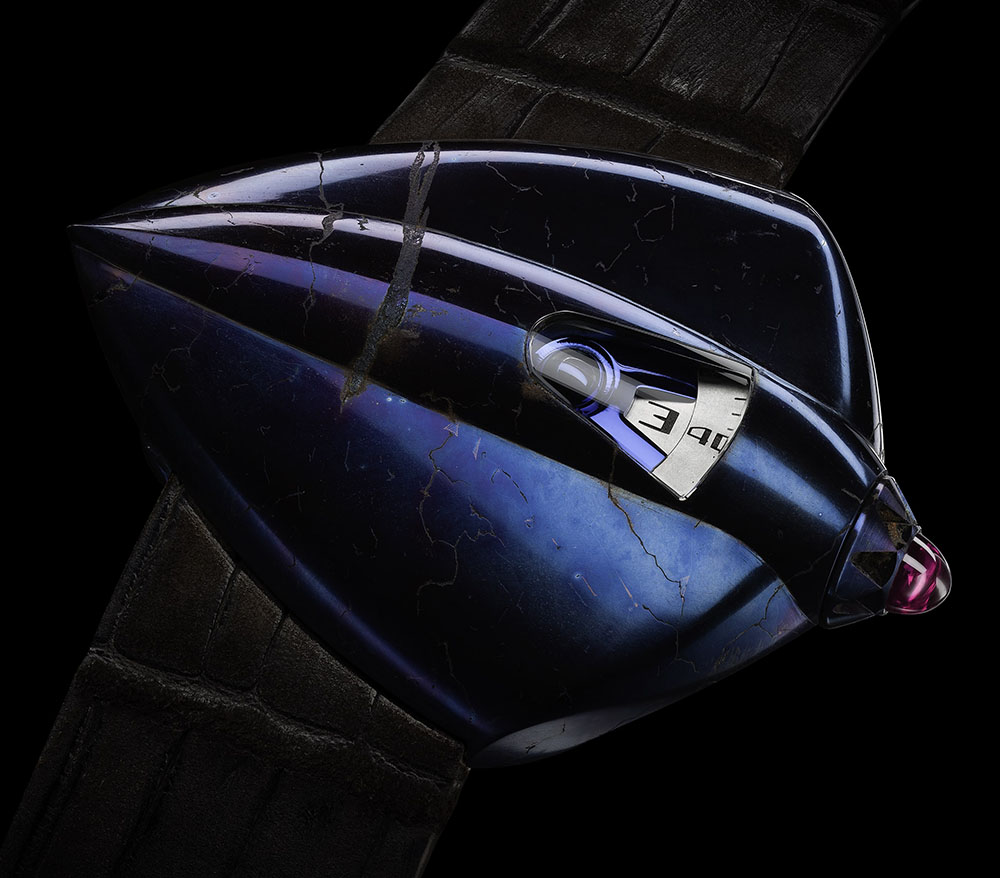
De Bethune Dream Watch 5 Meteorite
Rotonde de Cartier Earth and Moon Tourbillon Watch
Rotonde de Cartier Earth and Moon watch, tourbillon, second time zone and moon phase on demand, 47 mm, Manufacture manual winding mechanical movement, caliber 9440 MC. 18K pink gold case, beaded 18K pink gold crown set with a blue sapphire cabochon, dial partially decorated with meteorite, grid in 18K white gold forming Roman numerals, blued-steel sword-shaped hands. Brown alligator skin strap, 18K pink gold double adjustable folding buckle. Tourbillon complication, second time zone, moon phase on demand. Individually numbered movement consisting of 362 parts including 40 jewels. Total movement diameter: 40 mm, movement thickness: 5.65 mm, balance: 21,600 vibrations/hour, power reserve approx. 3 days. Sapphire crystal and case back. Case thickness: 16.65 mm.
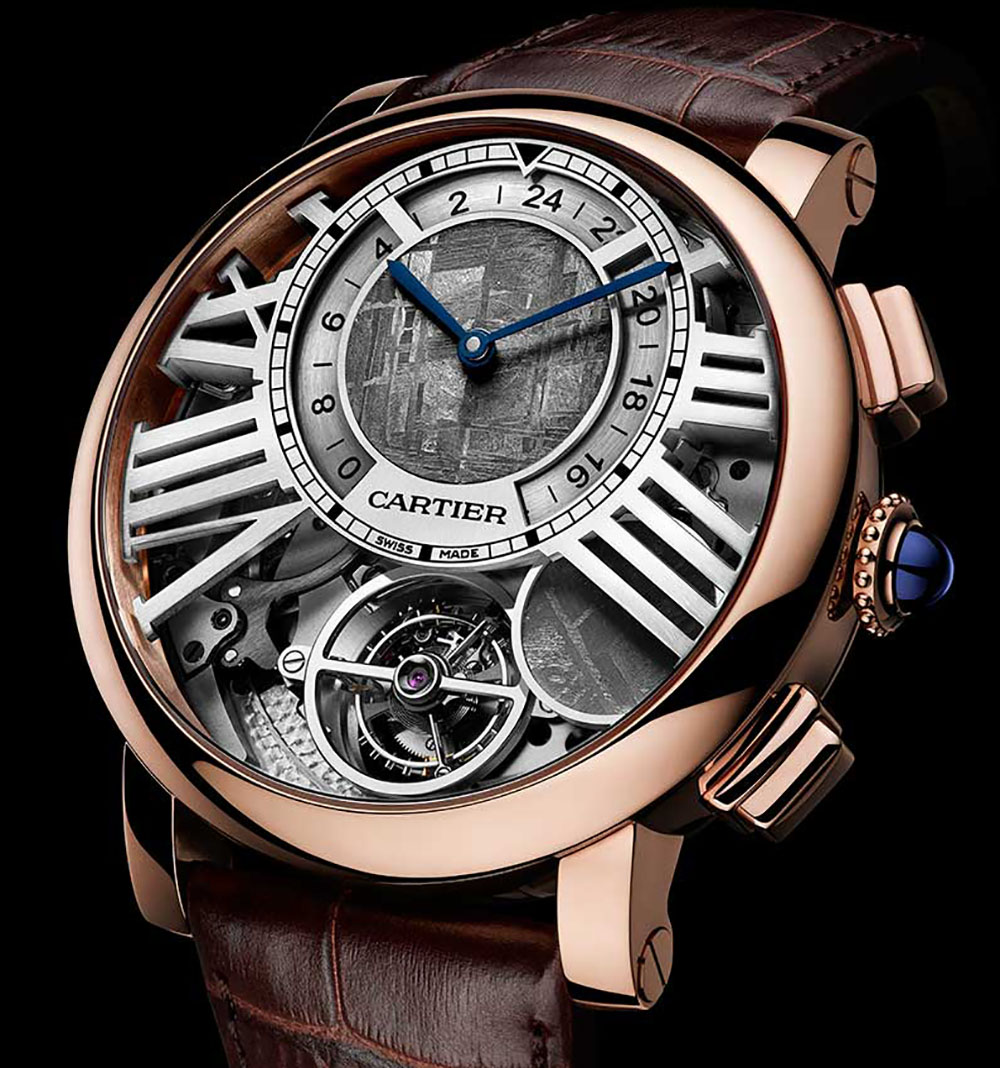
Rotonde de Cartier Earth and Moon Tourbillon Watch
Ulysse Nardin Planetarium Nicolaus Copernicus
This very special Ulysse Nardin watch (below) means to represent both Ptolemy’s characterization of an Earth-centric universe along with Copernicus’ helio-centric universe. While Copernicus got it right, both of them calculated the scale of the universe. Along with such early notions of astronomy, the Ulysse Nardin Planetarium Nicolaus Copernicus contains only the seven planets of the ancient world. These included; Earth, the Moon, Mercury, Venus, Mars, Saturn, and Jupiter.
The Planetarium Nicolaus Copernicus shows the positions of the planets in relation to both universe representations. In the middle of the watch is the Sun, with the planets flowing out on each concentric dial, with a nice little name placed next to them. This way you can see the planetary movement for Copernicus’ universe. Next, if you look at Earth, you’ll see a series of lines flowing from it. These allow you to use the same representation to calculate the position of the planets in Ptolemy’s universe. Further, the position of the Earth indicates both the month of the year and specific zodiac period that the Earth is in by looking at the outer ring on the watch dial. Lastly, you’ll notice that the Earth itself spins on an axis allowing you to see the moon revolve around the Earth. Very detailed Ulysse Nardin. Regardless, the watch still does not contain each planet. Perhaps Ulysse Nardin thought we would come full circle and do away with Neptune and Uranus, as we did Pluto.
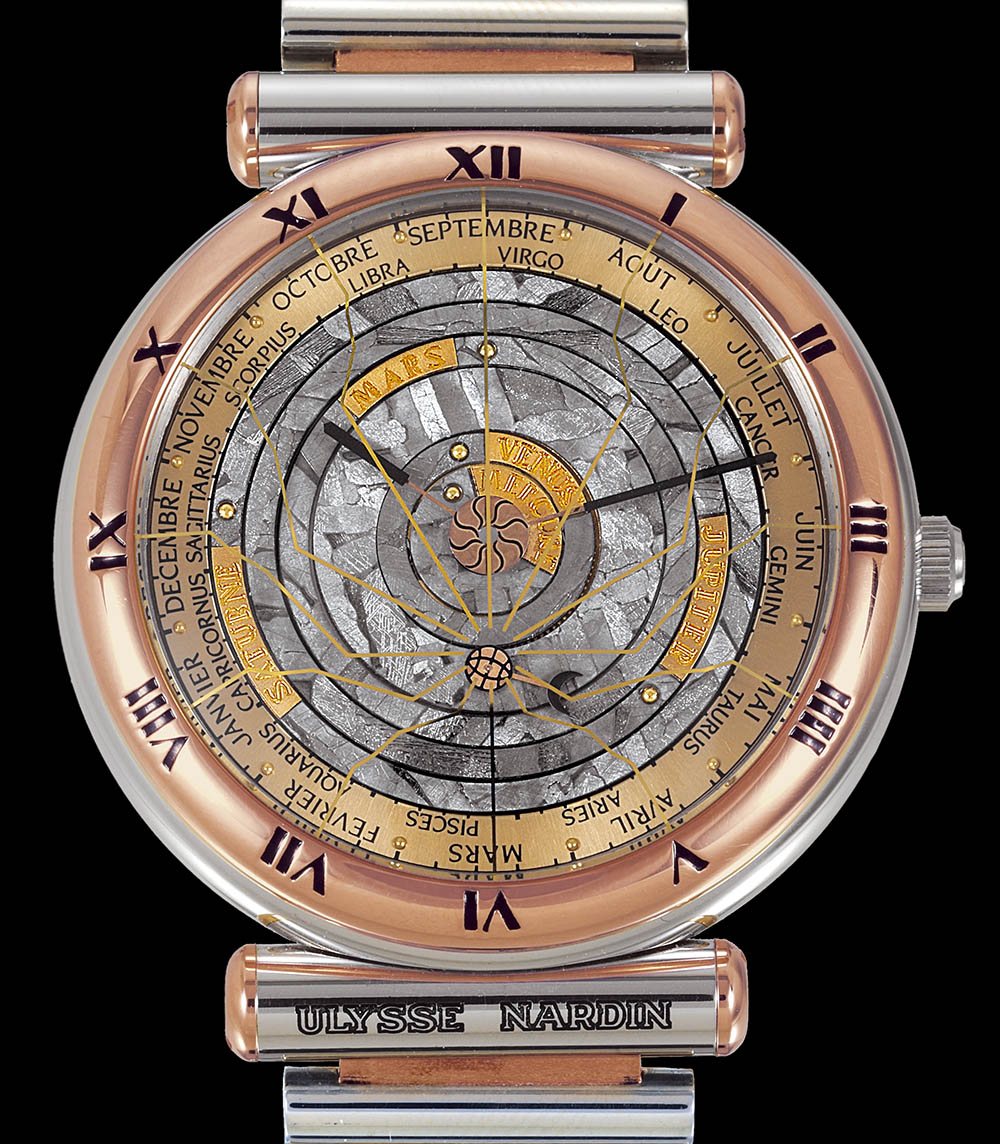
Ulysse Nardin Planetarium Nicolaus Copernicus
Rolex Cosmograph Daytona with Meteorite Dial
It seems Rolex has produced the most watches with meteorite dials including this classic Cosmograph Daytona below.
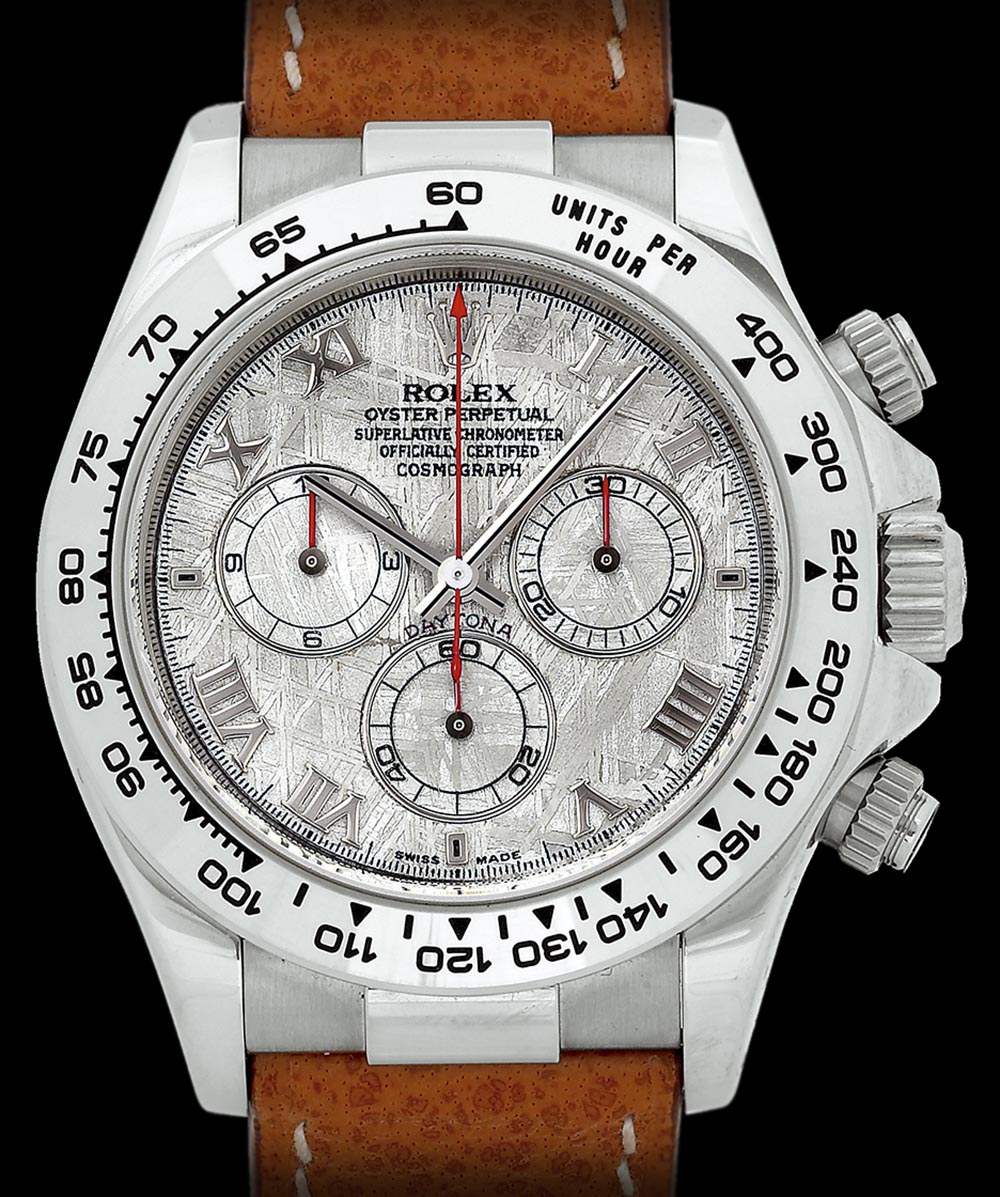
Rolex Cosmograph Daytona with Meteorite Dial
The Piaget Altiplano Automatic 40mm Meteorite Dial
This Piaget is a slim watch that shows all the traditional characteristics of the original Altiplano model: flat polished bezel, slim straight lugs. Complementing the dial is a grey alligator leather strap with an 18K pink gold pin buckle. The novelty of this new Piaget Altiplano Automatic 40mm lies in its dial, a thin slice of meteorite. Displaying a metallic grey color, the dial is adorned with pink gold applied indexes and hands. The pattern of the meteorite is the result of the crystallization of the stone, meaning that no two watches will have a similar dial.

The Piaget Altiplano Automatic 40mm Meteorite Dial
Jaquet Droz Grande Seconde Off-Centered “Meteorite” and “Stromatolite”
Jaquet Droz released two exclusive variations of its Grande Seconde Off-Centered timepiece (below), with dials made of meteorite and stromatolite. Each piece constitutes a wearable fragment of eternity that has traveled through space or time.

Jaquet Droz Grande Seconde Off-Centered “Meteorite” and “Stromatolite”
Other Jaquet Droz Meteorite dial watch collections from years past…
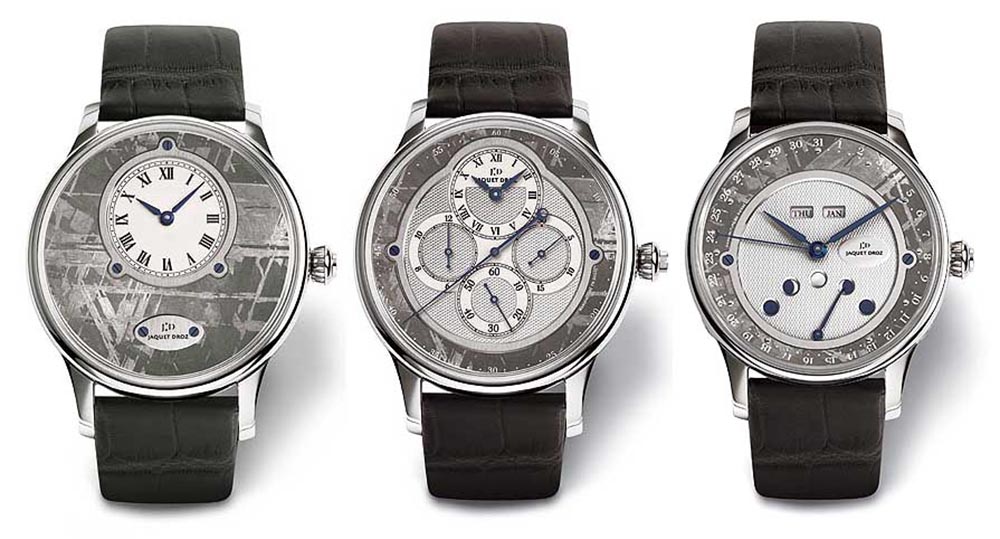
Hermès Arceau L’Heure De La Lune Meteorite
Cosmic and dreamlike. Setting foot on the moon and losing one’s sense of time and space. The new Hermès Arceau L’heure de la lune watch (below) offers a unique vision of Earth’s satellite with the simultaneous display of moon phases in both northern and southern hemispheres. Two mobile counters gravitate on a meteorite or aventurine dial, revealing mother-of-pearl moons in step with an exclusive module, coupled with a Manufacture Hermès movement.
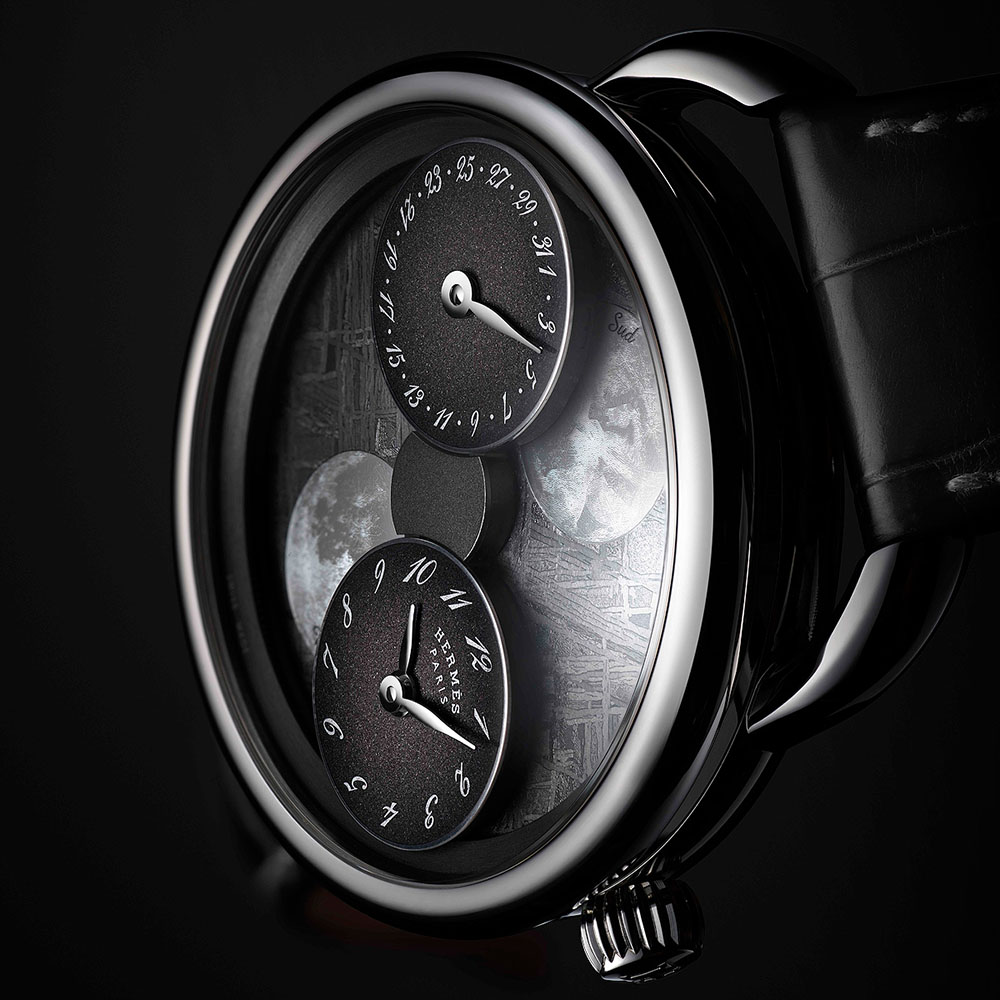
Hermès Arceau L’Heure De La Lune Meteorite
BOLDR Odyssey Automatic MeteoGrey
So you can’t afford a watch the price of a car or even a house and still want a meteorite dial watch? You’re in luck! A few new microbrands like BOLDR and Zelos offer some models well under $1000 USD. Case in point, the BOLDR Odyssey Automatic (below):
The dial of the Odyssey MeteoGrey is made from fragments of the Muonionalusta Meteorite, discovered north of the Arctic Circle in Sweden. The meteorite is roughly 4 billion years old and is composed of iron, nickel, germanium, gallium, and iridium.

BOLDR Odyssey Automatic MeteoGrey
Zelos Visionary V-1 Swiss Automatic Meteorite
Meteorite is also used for the Zelos ‘Visionary’ collection (below). This amazing metal is 4.5 billion years old with a striking design, unlike any other material. Each and every dial has a different pattern, otherwise known as the Widmanstatten Pattern. This is formed over millions of years of slow cooling, and cannot be reproduced synthetically. We use material from the Muonionalusta meteorite which is found in Sweden and landed over a million years ago.
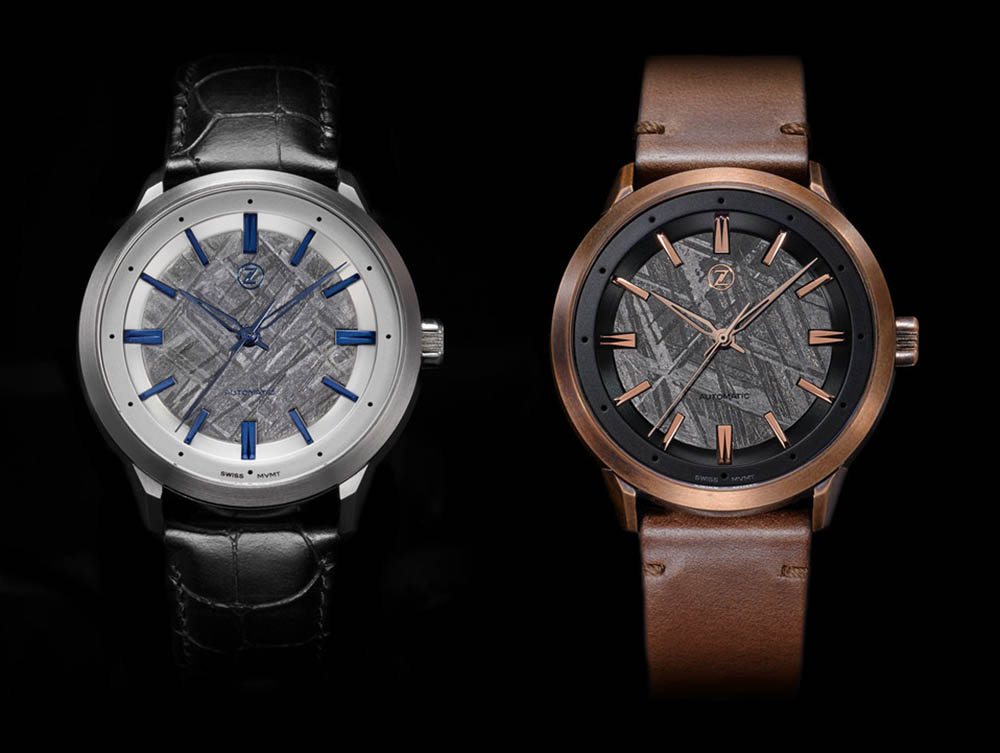
Zelos Visionary V-1 Swiss Automatic Meteorite
Know of any other cool meteorite watches not featured here? Let us know in the comments!


